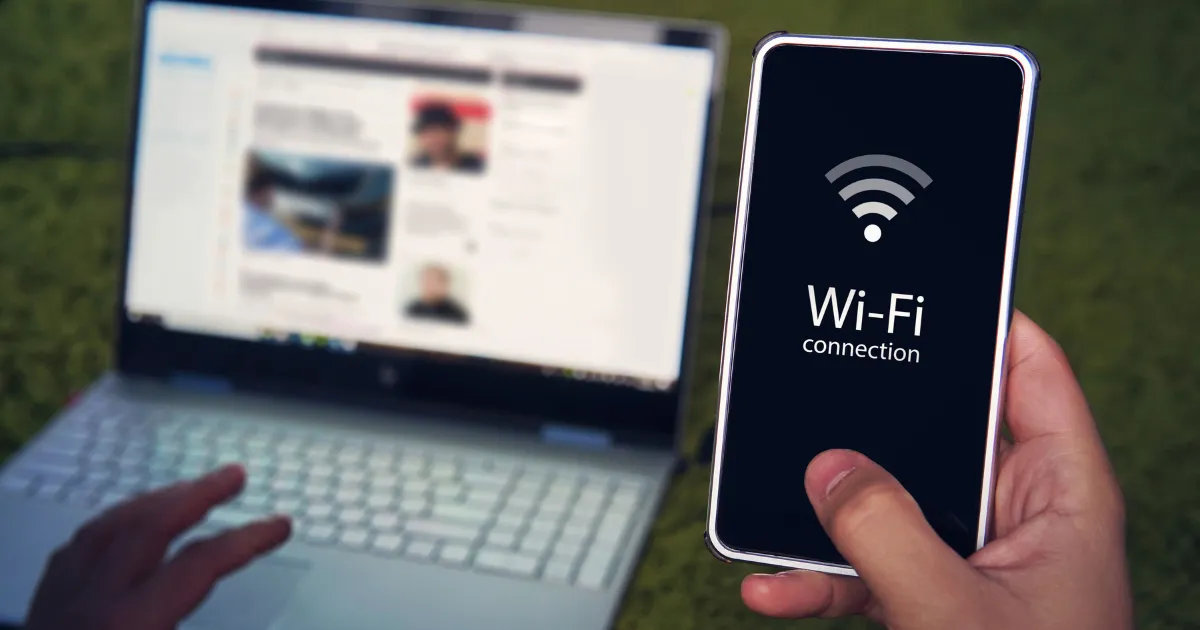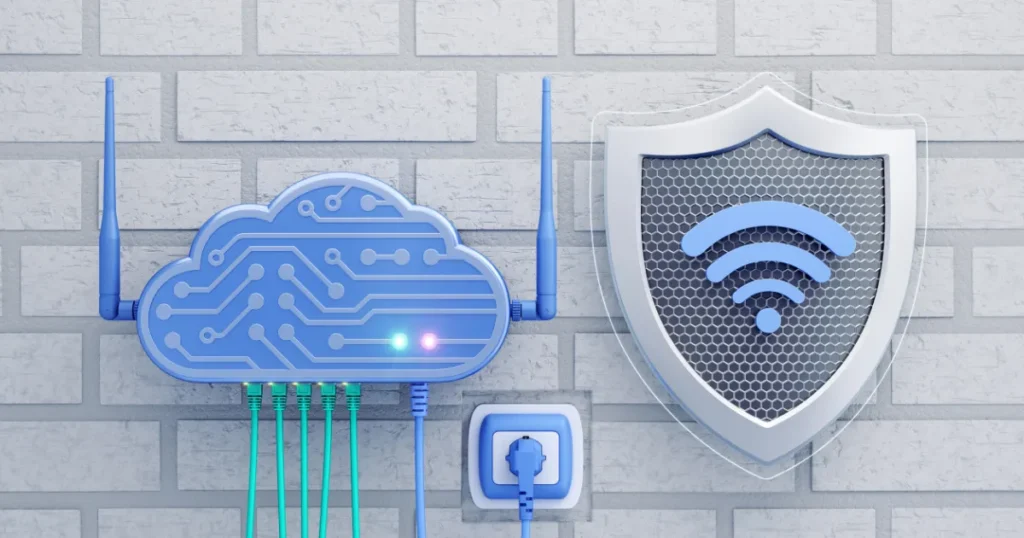How to Fix WiFi Authentication Errors on Android Device 2024
Description

Have you ever encountered a wifi authentication error on your Android device, preventing you from connecting to your WiFi network?
These annoying interruptions, often due to incorrect passwords, hardware glitches, or outdated software, are more common than you might think.
With nearly 97% of people in the U.S. relying on cell phones, and many experiencing connectivity issues that impede their work, understanding what is an authentication problem in wifi and resolving it has become crucial.
Addressing these wifi authentication errors effectively not only restores your immediate internet connection but also enhances your overall device usability.
In this article, we delve into the roots of wifi authentication issues, offer a step-by-step guide on how to troubleshoot wifi, and provide preventative tips to fix wifi and avoid future hassles.
Whether it’s a ‘couldn’t authenticate connection’ message, an ‘authentication problem hotspot’, or a persistent ‘sign in to wifi network problem’, rest assured, we have the how-to fix authentication problem solutions you need to get back online without delay.
Table of Contents
What is a WiFi authentication error?
Ever wondered why your Android device suddenly refuses to connect to a familiar WiFi network?
This frustrating scenario is typically due to a WiFi authentication error. Essentially, this error, an authentication failed meaning, occurs when your device cannot prove its identity to the WiFi network, which is crucial for establishing a secure connection.
Common Triggers of WiFi Authentication Errors
- Incorrect Password Entry: Often, simply mistyping the WiFi password can prevent connection.
- Network Configuration Issues: Mismatches in network settings between your device and the router can lead to authentication failures.
- Signal Interference: Physical obstructions or overlapping channels from nearby networks can disrupt the signal, complicating the authentication process. Changing the wireless channel can significantly improve your connection quality.
- Software or Firmware Updates: Occasionally, updates to your device or the router can reset or alter network settings, necessitating a reconfiguration. Keeping an eye on device updates and updating network drivers is key to maintaining a stable connection.
Advanced Issues Leading to Authentication Errors
- MAC Address Filtering: Some networks enhance security by allowing only devices with specific MAC addresses to connect.
- Complex Security Protocols and Encryption Issues: Errors in implementing or updating security protocols can block access.
- Hidden Network SSIDs: If a network hides its SSID for security reasons, connecting devices must be configured correctly to access it.
Understanding these factors is crucial for troubleshooting and resolving WiFi authentication errors, ensuring your device can securely connect without falling prey to potential security threats like hacking or data theft.
Common Causes of Authentication Errors
Ever wondered why your Android device fails to connect to your WiFi network, flashing the dreaded ‘wifi authentication error’? Let’s dive into some common causes that might be disrupting your connection.
- Incorrect Password: It’s easy to mistakenly enter the wrong password, especially with complex security codes. Always double-check your credentials when you encounter an authentication error, ensuring the password is entered correctly. If unsuccessful, check the password and try again to ensure accuracy.
- Network or Phone Glitch: Temporary glitches in your device or the network equipment can disrupt connections unexpectedly. A simple reboot of your router or restarting your device often resolves this issue, restoring a stable connection.
- Poor Connection: A weak signal from your router can lead to unstable connections that fail to authenticate. Consider moving closer to your WiFi router to strengthen the signal and enjoy a more reliable connection.
- Corrupted Network Settings: Sometimes, your device’s network settings get corrupted. A quick reset of these settings can often clear up any issues, restoring your device’s ability to connect to the network smoothly.
- Frequency Band Issues: Modern routers often broadcast in two frequency bands. If your device struggles with switching between these, it might fail to authenticate. Adjusting your device to a more stable band could improve connectivity.
- Airplane Mode Interference: If you’ve recently used airplane mode, ensure it’s fully turned off as it can disable WiFi capabilities temporarily. Re-enabling WiFi after airplane mode can restore your device’s network functions.
- Poor Router Connectivity: Overload or excessive distance from the router can degrade the connection quality, leading to authentication problems. Reducing network load by disconnecting unused devices may help improve your connection by conserving bandwidth.
- Software Updates: Recent updates can sometimes interfere with network settings. Check if rolling back device updates or adjusting settings helps resolve the issue, ensuring your network connection remains stable.
- Network Configuration Mismatch: Ensure your device’s network settings match those required by the network, especially if changes were recently made to the setup. Correct configuration can prevent unnecessary authentication errors.
- Signal Interference: Nearby electronic devices or thick walls can interfere with your WiFi signal, causing authentication errors. Removing obstacles between your device and the router can significantly improve signal strength and connectivity.
- Outdated Firmware or Software: Keeping your device and router updated is crucial for avoiding security vulnerabilities and connectivity issues. Regular device updates can significantly enhance your online security.
- MAC Address Filtering: Some networks enhance security by allowing only devices with specific MAC addresses to connect. Ensure your device is allowed access.
- Security Protocols and Encryption Issues: Incorrect settings related to network encryption and security protocols can prevent successful authentication.
- Hidden Network SSIDs: If a network does not broadcast its name (SSID), ensure your device is configured to connect to it manually.
- System Issues on Android Device: General system malfunctions on your Android device can affect WiFi connectivity.
- Encryption Format Mismatch: Make sure the encryption standards on your device match those of the network.
- Maximum Device Limit: Networks can only handle so many connected devices. If the limit is reached, new devices won’t authenticate, a classic sign of network overload.
- Router or Device Malfunctions: Hardware failures can occur unexpectedly, leading to persistent authentication problems.
Understanding these factors can help you troubleshoot and resolve the frustrating ‘wifi authentication error’ on your Android device, enhancing your authentication process.
Step-by-Step Guide How to fix a WiFi authentication problem

Ever encountered the frustrating ‘wifi authentication error’ on your Android device and wondered how to fix it?
Dealing with this issue can be straightforward if you follow the right steps.
Here’s a practical guide to help you reconnect swiftly and securely, emphasizing the need for authentication and how to troubleshoot wifi effectively, especially if you’re facing an authentication problem wifi android.
01. Check and Reset Your Connections
- Toggle Airplane Mode: Quickly switch airplane mode on and off. This resets the wireless radios and forces a new attempt to connect to your WiFi network.
- Restart Your Android Device: Often, a simple restart resolves underlying issues causing authentication errors.
- Forget and Reconnect to WiFi: Navigate to your WiFi settings, forget the network, and then reconnect by manually entering the password again. This simple connect-to-wifi strategy can often resolve connectivity issues.
02. Network and Device Adjustments
- Reset Network Settings: This action clears all network-related configurations from your device, potentially fixing the error.
- Update Android Software: Ensure your device’s operating system is up-to-date as updates often fix bugs related to connectivity, highlighting the importance of device updates.
- Static IP Configuration: Set up a static IP address for your device to avoid IP conflicts which might be causing the authentication error. A static IP can provide a more stable connection, ensuring a smoother experience with your IP-address.
03. Hardware and Router Settings
- Restart Network Hardware: If other networks connect but yours doesn’t, try restarting your router and modem.
- Check Device Load on Network: Too many devices connected to the same network can cause network overload. Verify you haven’t exceeded the limit.
- Separate Frequency Bands: If your router broadcasts both 2.4 GHz and 5 GHz bands, separate them to reduce interference.
- Change WiFi Channel: Switching to a less congested channel can reduce interference from other networks.
By following these steps, you should be able to troubleshoot wifi issues effectively and ensure a stable connection to your network.
Remember, these fixes are designed to address common issues and might not cover all unique situations. Learning to fix wifi problems is essential for uninterrupted connectivity.
Advanced Solutions for Persistent Problems
Are you still grappling with a WiFi authentication error despite trying basic troubleshooting steps?
It’s time to delve into some advanced solutions that can help you troubleshoot wifi connectivity issues on your Android device.
01. Reevaluate Network Settings and Security Protocols
- Ensure Network Configuration Accuracy: Double-check that your device’s network settings align with those of your WiFi router. Pay special attention to the network name, security protocol, and encryption method.
- Update Security Protocols: Confirm that both your device and the router are using the most current security protocols. Opt for WPA3 if available, as it provides the most robust security.
02. Address Hardware and Software Limitations
- Firmware and Software Updates: Regularly update your device and router’s firmware to patch any vulnerabilities that might be causing authentication issues. Ensure these updates are compatible with the latest WiFi standards and contribute to smoother device updates. Updating network drivers is a crucial step in this process.
- MAC Address Filtering Adjustments: If your device’s MAC address isn’t on the router’s approved list, add it manually. Only consider disabling MAC address filtering as a last resort.
03. Optimize Physical and Network Environment
- Reposition Your RouterMove your WiFi router to a central location in your home to remove obstacles and avoid signal interference from walls and other electronic devices. This can enhance the signal strength and stability.
- Change WiFi ChannelSwitch to a less congested WiFi channel if interference from neighboring networks is a problem, effectively changing the wireless channel to improve your connection. This simple change can significantly enhance your WiFi’s performance.
04. Reset and Reconnect
- Network Reset: If simpler fixes have failed, performing a reset of the network settings on your device might be necessary. This action will erase all saved WiFi, Bluetooth, and cellular configurations, requiring you to set them up anew, effectively giving your device a fresh start.
- Reboot Your Router and Device: Often, a simple reboot of both your WiFi router and Android device can resolve lingering connection issues, restoring your internet access without further complications.
By implementing these advanced strategies, you can troubleshoot WiFi issues more effectively, addressing complex WiFi authentication errors that standard troubleshooting may not resolve.
Remember, persistent issues may also require consultation with your device manufacturer or network provider to ensure all hardware and software components are functioning correctly.
Also Read: Bluetooth Pairing Problems: Quick Fixes for Common Issues
Preventative Measures to Avoid Future Errors
Regular Updates and Maintenance
- Update Android OS Regularly: Ensuring your Android device is always running the latest software updates is crucial. This not only improves security but also enhances functionality, potentially preventing WiFi authentication errors.
- Restart Network Hardware: Regularly reboot your router and other network devices to clear glitches and refresh connections, ensuring a smoother online experience.
- Reset Network Settings: Periodically resetting the network settings on your Android device can clear any corrupt data that might lead to authentication issues, offering a straightforward solution to connectivity problems.
Optimize Network Configuration
- Check Password Regularly: Always ensure the correct password is being used for your WiFi network. This simple check can save you from unnecessary troubleshooting and keep your connection secure.
- Separate Frequency Bands: If your router supports dual bands, separate the 5 GHz and 2.4 GHz networks. This helps devices connect to the most appropriate band automatically without confusion, optimizing your WiFi performance.
- Limit Connected Devices: To avoid network overload and ensure bandwidth management, keep track of how many devices are connected at one time. Reducing the number of devices can improve connection quality and reduce errors, ensuring a more reliable internet experience.
Advanced Network Management
- MAC Address Filtering: Add your device’s MAC address to the router’s approved list if it’s not already there, ensuring it always has access. This step can significantly improve your device’s connectivity to your home network.
- Change Security Protocols: If possible, update the security protocols and encryption methods to the latest standards to enhance security and compatibility.
- Manage SSIDs: Ensure your network SSID is not hidden. If it is, manually add the correct SSID to your device’s WiFi settings to improve its ability to connect reliably.
By implementing these preventative measures, you can significantly reduce the occurrence of wifi authentication errors and enhance your device’s ability to maintain a stable and secure connection to your network.
How to solve authentication problem in wifi connection on tv
Initial Troubleshooting Steps
- Forget and Reconnect to the Network: Navigate to the ‘Network & Internet’ settings on your TV, select your WiFi network, click on ‘Forget network,’ and then reconnect by entering the password again. This simple step can often fix wifi issues and help you connect more smoothly.
- Airplane Mode Refresh: Temporarily enable Airplane Mode on your TV for a few minutes, then disable it. This action can help reset the wireless communication functionalities of your device.
- Switch to Static IP: Changing your network setting from DHCP to Static can sometimes help solve authentication problems by providing a more stable connection setup, thanks to a static IP.
Router and Network Adjustments
- Router Restart: Unplug your router from the power source for about 30 seconds and then plug it back in. This reboot method can clear any temporary glitches affecting the network.
- Check and Update Firmware: Ensure your router and TV firmware are up-to-date. Manufacturers often release patches to fix bugs that could be causing connectivity issues, making device updates crucial for a smooth experience.
- Optimize Router Placement: Move your router to a more central location to ensure a stronger signal to the TV, and try to keep it away from other electronic devices that could cause interference. Removing obstacles can significantly improve your connection quality.
Advanced Settings and Resets
- Factory Reset: If all else fails, consider resetting your TV to its factory settings. Be aware that this reset will erase all personalized settings and data, but it’s a step that can often refresh your device’s ability to connect.
- MAC Address Filtering: If your network uses MAC address filtering, make sure your TV’s MAC address is authorized through your router’s settings.
- Security Protocol Alignment: Verify that both your TV and router are using compatible security protocols. Adjust as necessary to ensure they match.
By following these steps, you can effectively troubleshoot and resolve WiFi authentication errors on your TV, ensuring a stable and secure connection to your home network.
Conclusion
Navigating the complexities of WiFi authentication errors on Android devices leaves many wondering where to start.
How does one address and ultimately resolve these issues to ensure stable and secure connectivity?
This guide has traversed the landscape of common triggers, from incorrect password entries to more advanced problems like MAC address filtering and encryption issues, shedding light on the root causes.
The provided step-by-step solutions aim to restore your connection, emphasizing regular updates, network adjustments, and the proper setup of hardware and router settings as key to overcoming these hurdles.
The solutions outlined promise a pathway to resolving WiFi authentication errors, fostering a better understanding of your device’s connectivity issues.
By implementing these preventative measures and advanced troubleshooting strategies, you can enhance the reliability of your connection and mitigate future problems.
Remember, the journey to a hassle-free WiFi experience on your Android device begins with understanding the common causes of authentication errors and taking proactive steps to address them.
Through this comprehensive guide, you are now equipped with the knowledge to navigate these challenges successfully, ensuring a smooth and uninterrupted online experience.
FAQs
Q: What are the steps to resolve a Wi-Fi authentication issue on my Android phone?
A: To fix an Android Wi-Fi authentication problem, you can try several solutions:
- Reset your Wi-Fi connection.
- Toggle Airplane Mode on and then off.
- Use a tool like DroidKit to address Wi-Fi issues.
- Switch your IP settings from DHCP to Static.
- Restart your router.
- Utilize the WPS (Wi-Fi Protected Setup) Push Button feature.
- Change the security protocol of your Wi-Fi network.
- Verify if there are too many devices connected to your Wi-Fi network, as this may exceed its maximum capacity and potentially lead to a network overload, affecting bandwidth.
Q: How can I troubleshoot Wi-Fi errors on my Android device?
A: To troubleshoot Wi-Fi errors on your Android device, follow these steps:
- Delete the network from your device and add it again.
- Check for any apps that might be causing issues with your Wi-Fi connection.
- Restart your router and modem.
- If you’re trying to connect to a public network, ensure you’ve signed in correctly.
- Reset all network settings on your device.
- Make sure that if you’re using a hotspot, it is turned on.
- Contact your mobile carrier for further assistance if the problem persists.
- Be aware that Wi-Fi may automatically turn off when the hotspot feature is enabled.
Q: Why does my device display an authentication error when I try to connect to Wi-Fi?
An authentication error may occur when connecting to Wi-Fi due to vulnerabilities in the security protocols or incorrect encryption settings. To resolve this, make sure that your device and the router are configured to use the same security protocols and adjust them if necessary, ensuring proper authentication.
Q: What could be the reason my Android device fails to authenticate?
If your Android device is unable to authenticate, it could be due to your pop-up blocker settings. Some pop-up blockers can prevent the screen required for Google Login from appearing. To fix this, you should adjust your pop-up blocker settings to allow sites related to Google Login or temporarily disable the pop-up blocker. After making changes, restart the application and attempt to log in again.













